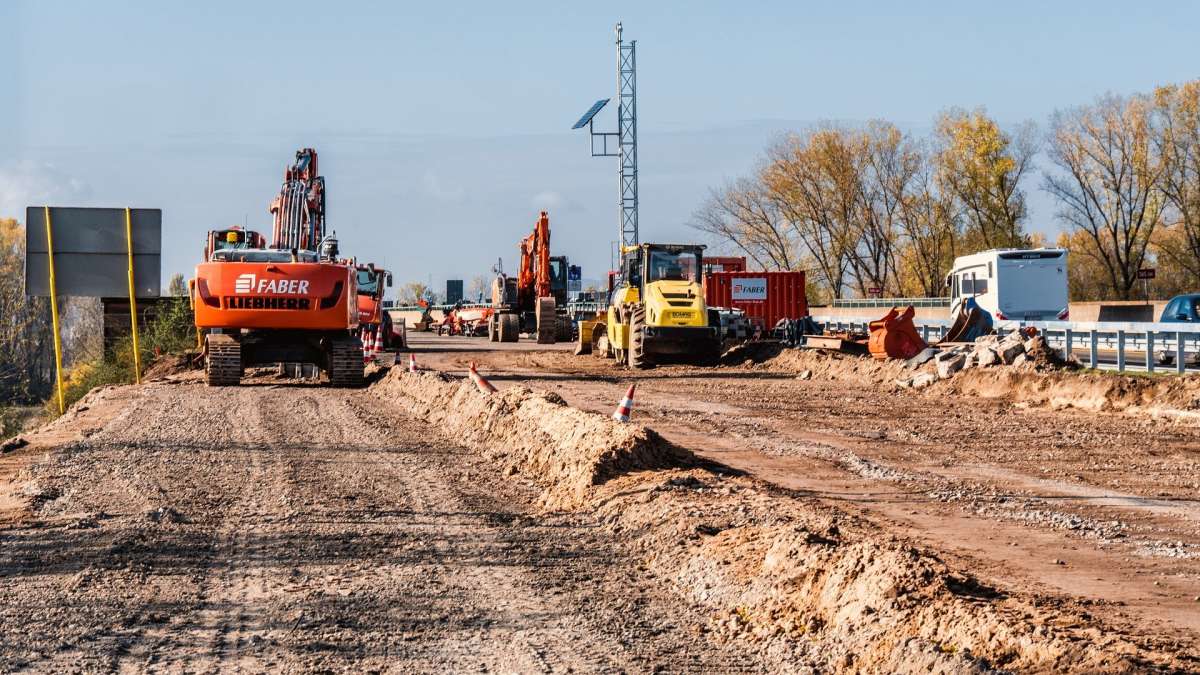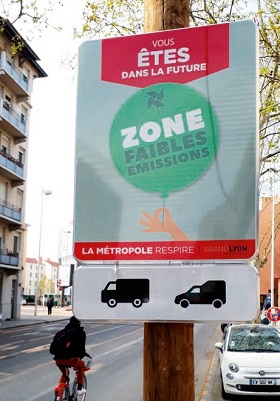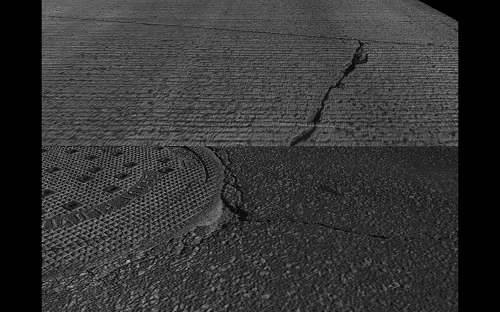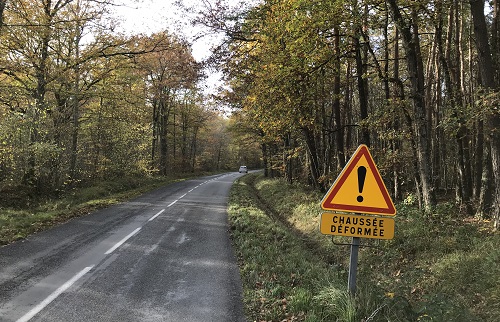

The Journées Techniques Route provides an opportunity for public and private stakeholders (regional authorities, project owners and managers, construction companies, suppliers and service providers, engineers, research centres, etc.) specialising in the construction, maintenance, safety, and operations of roadways to get together.
The seminar was organised by Gustave Eiffel University, with support from the French Institute of Roads, Streets and Mobility Infrastructures (IDRRIM) and Cerema.
Pascal Berteaud, Director General of Cerema, gave a presentation to open the seminar, and highlighted Cerema’s positioning in the infrastructure sector, which encompasses research as well as operational support for regions. He also touched on the main transformations the establishment has experienced since the beginning of the year: refocusing its expertise around six fields, with five sectors identified for infrastructure, as well as a new visual identity, and a new, solid positioning in adaptation to climate change.
The environmental aspect of the 2021 event was underlined through an infrastructure strategy focusing on climate and resilience, the circular economy, and air quality.
Low emission zones, a regulatory tool to reduce greenhouse gas emissions
 In light of the public health (second biggest cause of mortality in France according to the 2016 report from the French public health authority) and legal implications of air quality on a nationwide level, Low Emissions Zones (ZFEm) were passed into law as part of the Mobility Directives law of December 2019.
In light of the public health (second biggest cause of mortality in France according to the 2016 report from the French public health authority) and legal implications of air quality on a nationwide level, Low Emissions Zones (ZFEm) were passed into law as part of the Mobility Directives law of December 2019.
ZFEm is a scheme local authorities can use to improve air quality and protect the health of their residents, by permanently limiting access to densely populated areas for the most polluting vehicles. The aim is to reduce atmospheric pollution by limiting nitrogen dioxide and fine particles.
Today, there are four ZFEm across France, and seven more urban areas will be rolling out the scheme by the end of 2021. The challenge facing local authorities today is to find the best possible compromise between effective ZFEms (which appeal to public health concerns) and their social acceptance. Indeed, alternatives to private cars are not available in every part of France and, for the poorest segments of society, significant subsidies would be required for the replacement of fleets at the rate such a scheme would require.
Gradual implementation of the scheme and the incorporation of ZFEm into mobility and planning policies are key factors to striking the right balance between the scheme’s effectiveness and its social acceptance.
The research that goes into establishing a ZFEm also requires an in-depth comparative analysis of mobility and air quality, with special attention paid to local vehicle categories, followed by an impact assessment of different scenarios in terms of traffic and travel as well as air quality (evaluation of emissions and concentrations, as well as how many people are exposed to levels that exceed regulations).
Roadway impact assessment air quality/public health handbook

In France, chronic exposure to man-made fine particles causes 48,000 premature deaths every year, according to estimates.
The "air quality and public health" section of feasibility studies is intended to identify a region’s major challenges in terms of air quality and potentially exposed populations, as early as possible in the planning process.
The aim is to compare variations of the route to reduce pollution’s impact on air quality and residents, in order to help decision-makers make informed decisions, alongside other factors (environment, technical, economic, road safety).
Cerema published an air quality and public health handbook for feasibility and preliminary studies upstream of the project.
It describes the aim of these studies in relation to air quality and public health, as well as highlighting useful data and tools available to carry out this analysis, even when insufficient data means that measurements must be taken, because the air quality and public health section of the study includes analysis of the current context of the site and its surroundings, to help identify at-risk areas.
Encouraging alternative materials for roadway techniques
The project conducted with the Communauté de Communes du Grand Autunois-Morvan (CCGAM), which wanted to study how available alternative materials could be used in the region, was also presented. The project was conducted against a backdrop of new regulatory requirements, with the aim of highlighting opportunities available in the region.
The aim, by expanding the production and reuse of alternative materials, was to reduce the use of non-renewable raw materials, as well as to involve local players in these new industries. CCGAM wanted to educate local stakeholders by giving them the knowledge and tools they need.
Cerema was called in on a three-phase assignment:
-
The inventory and categorisation of sources of alternative materials for use in public works, within a 50km radius of Autun.
-
Training local stakeholders in how to use alternative materials in public works
-
Support amending the CCGAM specifications to include technical provisions and encourage uptake
Visit the dedicated website (in French):
Recent innovations in equipment for signs and markings

French companies have recently presented innovative systems for widespread use, which are fitted directly onto the road surface. Field experiments in real-world conditions were required to properly understand and assess these inventions.
They were granted permits from the French Ministries of the Interior and the Ecological Transition, following an application by highways managers. In return for these permits, which gave the managers legal freedom, the French government requested, as the centrepiece of an experimentation campaign, a true evaluation.
The evaluation must examine three primary aspects of the system being tested: effectiveness, reproducibility, and minimal impact on road safety. 3 systems are currently being tested around France:
-
Guid’N Grip® from Eiffage: a combination of high-adherence coatings and LED studs
-
Flowell® from Colas: LEDs encapsulated in a multi-layer medium, installed on top of or fitted within the road surface, which come in a variety of shapes, including those used for regulatory road markings
-
LuminoKrom® by OliKrom: photoluminescent road paint which, come nightfall, releases the light it has stored during the day
Permits for the experiments were granted by the two relevant highways management ministries in the form of individual or general certificates for a specific system, following research conducted with Cerema. Note that this does not exempt the local authority from seeking a permit.
In short, an experiment permit is generally granted for a 2-3 year period, with the condition of delivering an assessment report.
-
If the report is conclusive and positive, the system in question may be added to regulations
-
If it is conclusive but with insufficient results, or new factors become apparent, the experiment may be extended.
-
Lastly, if results are not conclusive, the experiment is stopped and the experimental system must be removed.
Feedback on the GERESE secondary road network management project, with 9 French departments

GERESE is a response to a need for improved management of a department’s secondary road network. The project, designed by staff at Cerema, contains two main phases.
-
Identify a suitable method for tracking the secondary network, to help managers assess their network as part of an integrated approach, and to plan effective maintenance work that is faster and costs less.
-
Design a demo as proof of concept.
The project was launched in 2018, and is due to end in the first half of 2021, and was conducted as a partnership and innovation initiative involving nine French departments.
After having identified the specific needs of each department, an international analysis of infrastructure management practices was conducted. Then, drawing on existing practices and in an effort to fulfil needs, innovative assessment and management methods for road networks were created.
These innovative methods take into account the varied problems that managers can encounter on this kind of network:
-
Management of natural hazards
-
Improving road safety
-
Protecting roadway assets and the environment
-
Optimising maintenance and operations in light of increasingly limited resources
-
Support for the emergence of sustainable mobility
The methodology was then tested on a 100km stretch of road in each of the partner departments. Results are currently being analysed and will ultimately produce an innovative methodology for integrated management of secondary road networks and the development of an associated tool.
Standardisation of bituminous emulsion mixtures
The new European standard EN 13108-31 published in 2020 specifies requirements for bituminous emulsion mixtures used to make transport infrastructure. It replaces the French standards NF P 98-121 (emulsion treatments) and NF P 98-139 (bituminous emulsion concretes).
The standard sets a common European framework of requirements for these products. Each Member State will now select which specifications it uses according to the characteristics of its road network, and the resources at its disposal.
The Coatings standardisation commission is currently drafting a documentation booklet to explain the properties chosen for these mixtures in France.
Cerema is playing a major role in this standardisation process. It also boasts robust expertise in the matter, notably through its leading Emulsion Techniques division at its Saint Brieuc branch.
Making embankments and capping layers (GTR), a technical guide

A guide to making embankments and capping layers (GTR) is now being revised following publication of European standards on earthworks, NF EN 16907-1 to 6, of which number 2 introduces a new classification.
To that end, a documentation booklet has been created: FD P11-304, which presents the content of each standard that has just been published. This revision is also an opportunity to provide an update with the latest advances made in these past 20 years, published as memos or research reports (PF2qs, drainage guide, TerDouest report, environmental acceptability guides, etc.).
The GTR will still be divided into two booklets, the first covering general information and PST/AR/CDF provisioning, and the second containing classification tables for the reuse of embankments and capping layers, as well as compacting.
NF EN16907-2 classification contains changes such as the move to 63μm for the percentage of fines, a different classification for sand and gravel, and a distinction for metamorphic rock.
Other notable additions were made, with the most important being:
-
The Lmax concept (greater length of particles and blocks)
-
The CBRi criteria > 20 for the water resistance of granulates
-
Provisioning of PF2qs and rules for upgrading platforms
-
Classification of soil sensitivity to frost, from appendix C of NF P98-086
-
Ability to use A4 clays of up to IP= 55
-
Specific behaviour of metamorphic rock with a rate of discharge
-
Consideration of angularity when compacting granulates as an untreated capping layer
-
Consideration of new compacting technologies
The revised GTR is currently being finalised, and will be proofread at IDDRIM this summer, for a planned publication in late 2021/early 2022. In parallel, French standard NF P11-300 will be revised to bring it into line with NF EN16907-2 and the new version of the GTR.
Roads affected by drought: remedial solutions

Against a backdrop of climate change, roads are also victim to the consequences of increasingly intense droughts. Clearly identifying the causes and aggravating factors of this damage will help us to adapt new remedial solutions to help them withstand future climate challenges.
Cerema, a certified Institut Carnot Clim’adapt, in partnership with the Centre-Val de Loire departmental councils, is developing new remedial solutions to limit the vulnerability of roads affected by droughts as part of a multi-partnership named ORSS, or the observatory for roads affected by droughts.
What does the ORSS project contribute to climate resilience and public policy?
-
Faced with a climate emergency characterised by extreme and increasingly frequent, the traditional method used by local authorities to manage hazards and their consequences is now almost obsolete.
-
Roadways can now only be made resilient to climate change through policies produced as part of an adaptation strategy that uses new environmental, economic, and sustainable solutions.
-
With the involvement of all socioeconomic players and stakeholders, climate resilience for roadways will also lead to reduced maintenance costs for managers, and contribute to the global reduction in greenhouse gases to produce an effective response to global warming.
Through the unprecedented work being carried out by ORSS, Cerema is supporting local authorities and businesses to plan and implement strategies to adapt roadways to climate change.
The effect of greening infrastructures on urban overheating
The climatic impact of greening cities is one of the areas currently being researched by Cerema. This research shows the need to separate two objectives at two different scales:
-
Reducing urban heat islands, though the mass use of vegetation, and trees in particular
-
Provide comfortable public spaces, which requires careful consideration of the spatial configuration of the vegetation to reduce all heat exchange flows between the bodies of users and sources of heat (shade, ventilation, etc.)
In general, solutions in contact with the ground are more effective.


